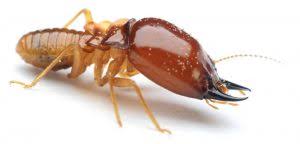A Biased View of Absolute Termite Control Adelaide
Termites are detritivores, consuming dead plants at any level of decomposition. They also play a vital role in the ecosystem by recycling waste material like dead wood, faeces and plants.8182 Many species eat cellulose, having a specialised midgut that divides down the fiber.83 Termites are considered to be a major source (11 percent ) of atmospheric methane, one of the prime greenhouse gases, produced from the breakdown of cellulose.84 Termites rely primarily upon symbiotic protozoa (metamonads) and other microbes such as flagellate protists in their guts to digest the cellulose to them, allowing them to absorb the end products to their own use.8586 Gut protozoa, for example Trichonympha, in turn, rely on symbiotic bacteria embedded on their surfaces to create a number of the necessary digestive enzymes.
The flagellates have been lost in Termitidae.878889 Scientists' understanding of the relationship between the termite gastrointestinal tract and the microbial endosymbionts remains rudimentary; what is true in most termite species, however, is that the workers feed the different members of the colony together with substances derived from the digestion of plant material, either from the mouth or anus.54 Judging from closely related bacterial species, it is strongly assumed the termites' and cockroach's gut microbiota derives from their dictyopteran ancestors.90.
Certain species like Gnathamitermes tubiformans have seasonal food habits. By way of instance, they may preferentially consume Red three-awn (Aristida longiseta) during the summer, Buffalograss (Buchloe dactyloides) from May to August, and blue grama Bouteloua gracilis during spring, summer and autumn. Colonies of G. tubiformans consume less food in spring than they do during autumn when their feeding activity is high.91.
Numerous woods differ in their susceptibility to termite attack; the differences are attributed to such factors as moisture content, hardness, and resin and lignin content. In one study, the drywood termite Cryptotermes brevis strongly preferred poplar and maple forests to other forests which were generally rejected by the termite colony.
8 Easy Facts About Advantage Termite & Pest Control Adelaide Explained
Some species of termite practice fungiculture. They maintain a"garden" of specialised fungi of genus Termitomyces, which can be nourished from the excrement of the insects. When the fungi are eaten, their spores pass undamaged through the intestines of the termites to finish the cycle by germinating in the new faecal pellets.9394 Molecular evidence suggests that the household Macrotermitinae developed agriculture roughly 31 million decades back.
Originally living in the rainforest, fungus farming allowed them to colonise the African savannah and other new environments, eventually expanding into Asia.95.
Depending on their feeding habits, termites are put into two classes: the lower termites and higher termites. The reduced termites predominately feed on timber. As wood is difficult to digest, termites prefer to consume fungus-infected timber because it is a lot easier to digest and the fungi are high in protein. Meanwhile, the bigger termites consume a vast array of substances, including faeces, humus, bud, leaves and roots.96 The intestine in the lower weeds contains many species of bacteria along with protozoa, whereas the greater termites only have a few species of bacteria with no protozoa.97.


Indicators on Adelaide's Best Termite Control You Should Know
Among most predators, ants are the greatest enemy to termites.99100 Some ant genera are specialist predators of termites. By way of example, Megaponera is a rigorously termite-eating (termitophagous) genus that perform raiding actions, some lasting several hours.113114 Paltothyreus tarsatus is another termite-raiding species, with each individual stacking as many termites as possible in its mandibles prior to returning home, all of the while recruiting additional nestmates to the raiding site through chemical trails.99 The Malaysian basicerotine ants Eurhopalothrix heliscata utilizes a different strategy of termite hunting by pressing themselves into tight spaces, as they hunt through rotting wood housing termite colonies.
A scout recruits 1030 you could look here workers to an area where termites are present, killing them by immobilising them using their stinger.115 Centromyrmex and Iridomyrmex colonies sometimes nest in termite mounds, and so the termites are preyed on by these ants. No evidence for any kind of relationship (other than the usual one) is known.116117 Other ants, including Acanthostichus, Camponotus, Crematogaster, Cylindromyrmex, Leptogenys, Odontomachus, Ophthalmopone, Pachycondyla, Rhytidoponera, Solenopsis and Wasmannia, also prey on termites.10799118 In contrast to each of these ant over at this website species, and despite their enormous diversity of prey, Dorylus ants rarely consume termites.119.